Fix: Desktop Icons are Missing in Windows 10
Windows 10 was launched months ago, marking a significant change in UI over time. In Windows 10, Microsoft eliminated a number of GUI bugs found in Windows 8. The reintroduction of the start menu, a feature desperately requested by users, was a major change. In addition to the start menu, numerous modifications in the GUI and performance were also incorporated. This significant change in the GUI initially confused many users, as they needed some time to familiarize themselves with the alterations.
Some of the users have experienced a problem; i.e., desktop icons are missing in Windows 10. This can be quite annoying for users who have a lot of content on their desktop and suddenly find it disappeared. Keeping that frustration in mind, I am going to attempt to fix this issue.
Reasons for ‘Missing Desktop Icons in Windows 10
A majority of people consider it a bug within Windows 10, but it is not. This issue can occur accidentally if you have unknowingly modified some settings. Windows 10 has two built-in modes for user facilitation, namely, Desktop and Tablet. Somehow, you might have enabled Tablet mode, leading to the disappearance of Desktop icons.
Method #1: Checking for Visibility of Desktop Icons
If all of your Desktop icons are missing, then you might have triggered an option to hide desktop icons. You can enable this option to get your Desktop icons back. Follow the steps below.
- Right-click an empty space on your desktop and navigate to the ‘View’ tab at the top.
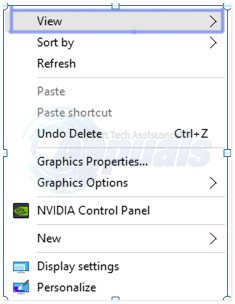
- Inside the View tab, check for the Show desktop icons at the bottom. In your case, it might be unmarked. So, mark it as checked by clicking over it. See the image below for illustration.
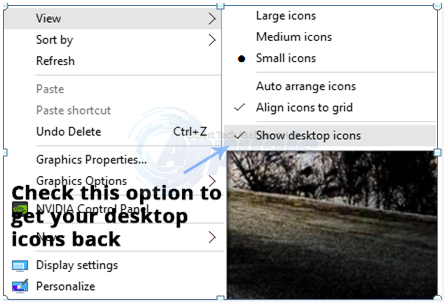
Method #2: Enabling Desktop Icon Visibility.
If your default desktop icons are missing, you can make them visible inside the Settings. Follow the steps below.
- Use Cortana to search for the Settings window and open it from the search results.
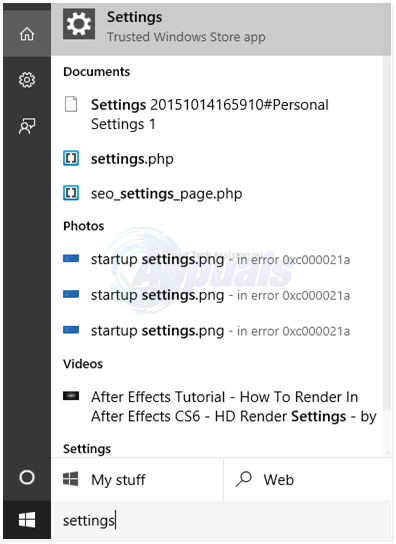
- Inside Settings, click on Personalization. From the next window, select the Themes tab from the left pane.
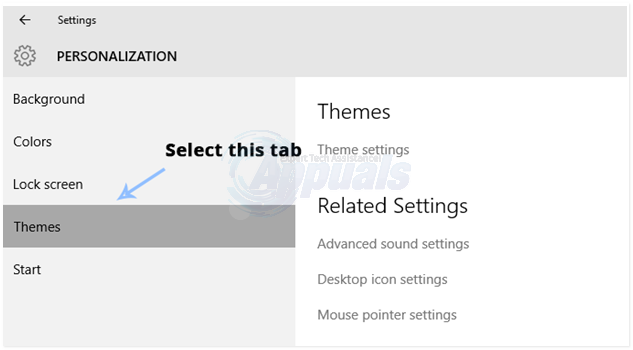
- On the right pane of the Themes tab, click on Desktop icon settings to open the settings in order to enable the Desktop icon visibility.
- Select the icons you want to show on the desktop and click on Apply and OK buttons afterward.
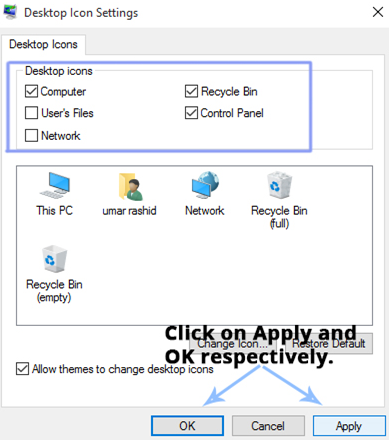
Method #3: Disabling the Tablet Mode
Tablet mode is integrated within Windows 10 to provide a better touch experience for Windows Tablet users. You may have accidentally enabled this mode, causing the disappearance of icons.
- Open Settings and select System to access system settings. In the left pane, click on Tablet Mode. If Tablet Mode is active, turn it off from the right pane.
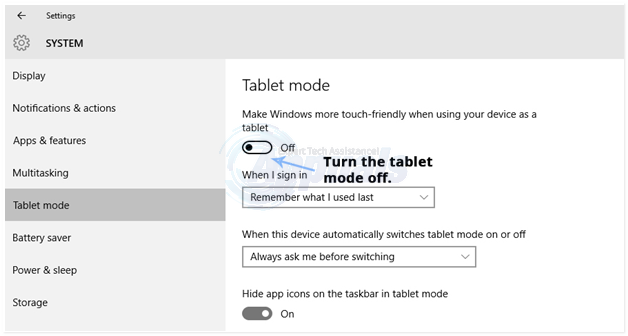
- Close the Settings window and check if your desktop icons are visible or not.
Method #4: Initiating an SFC (System File Checker) scan.
An SFC scan checks your entire computer for faulty drivers or corrupted files, and it automatically rectifies these issues. Therefore, in this step, we will initiate an SFC scan. To do this:
- Press the “Windows” and “R” keys simultaneously to open the RUN prompt.
- Type ‘cmd’ into the search bar, then simultaneously press the ‘Shift’, ‘Ctrl’, and ‘Enter’ keys.
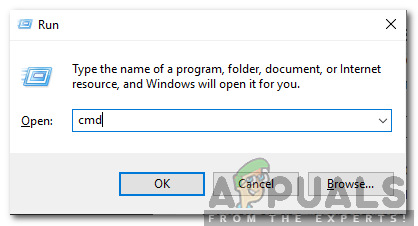
Typing cmd in the Run Prompt and pressing Shift + Alt + Enter to open an elevated Command Prompt - Click on “yes” in the prompt to provide administrative privileges.
- Type “SFC /scannow” and then press “Enter”.
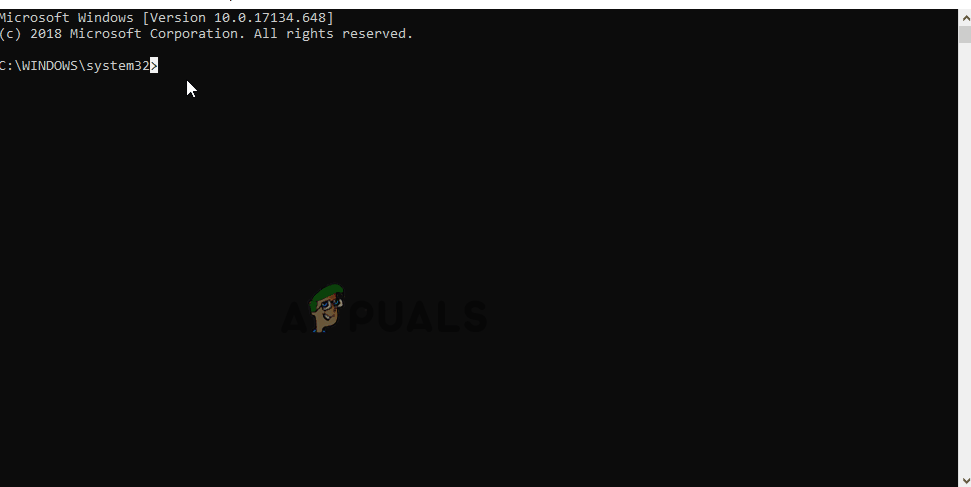
Typing “sfc/scannow” in the command prompt.
Method #5: Recovering icons from OneDrive,
In some cases, Windows might try to tidy up your desktop and move the files into a folder named “Desktop!” in One Drive. Therefore, you can copy the files from that folder and paste them onto your desktop to get rid of this issue.
- Launch OneDrive and look for a folder named “Desktop”.
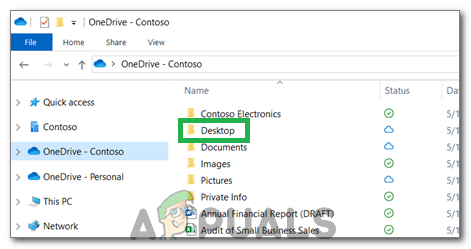
Desktop folder Onedrive - Open the folder and copy all the icons present inside it,
- Paste these icons on your desktop.
Method #6: Using a Workaround.
In some cases, the situation can be remedied by employing a workaround that was discovered by a user. Basically, you initiate the “Auto Arrange Icons” function on the desktop and the icons are returned. For that:
- Right-click anywhere on your desktop.
- Click on the ‘View’ button and select the ‘Auto Arrange Icons’ option,
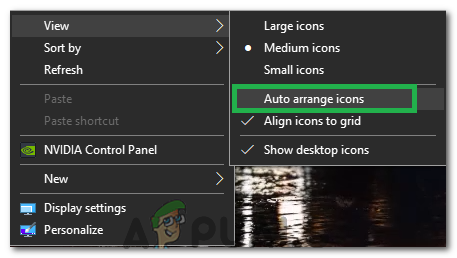
Selecting “Auto Arrange Icons” option - Check to see if the issue is fixed.
Another Workaround:
- Press Ctrl + Alt + Del to open the task manager.
- Click on any instances of Windows Explorer in the processes tab and end them.
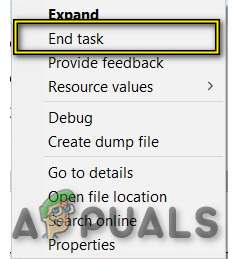
End Task in Task Manager - Press “Windows” + “R” to open the Run prompt.
- Type in “cmd” and press “Ctrl” + “Shift” + “Alt” to provide administrative privileges.
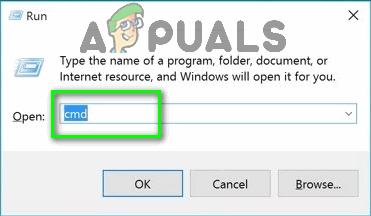
Type “cmd” into the Run dialog - Type in the following commands one by one and press “Enter” after each to execute them.
CD /d %userprofile%\AppData\Local DEL IconCache.db /a EXIT
- Restart Windows Explorer from the Task Manager and check to see if the issue persists.